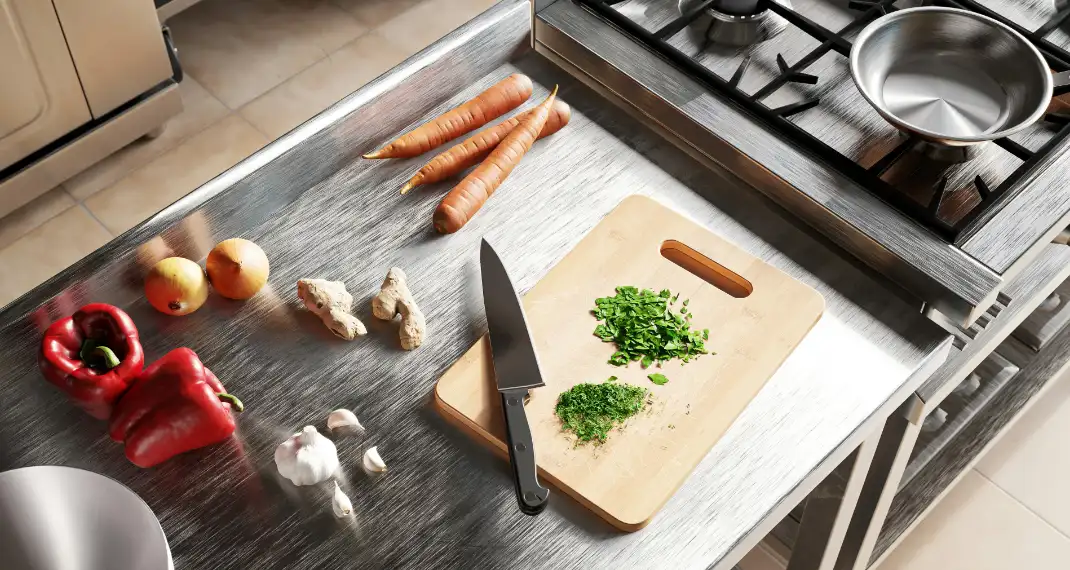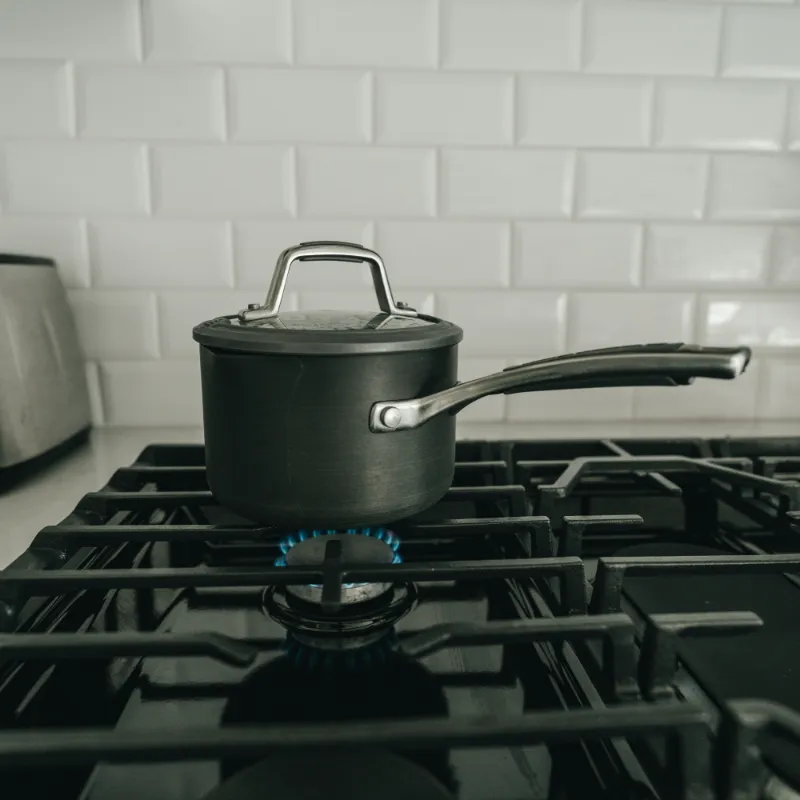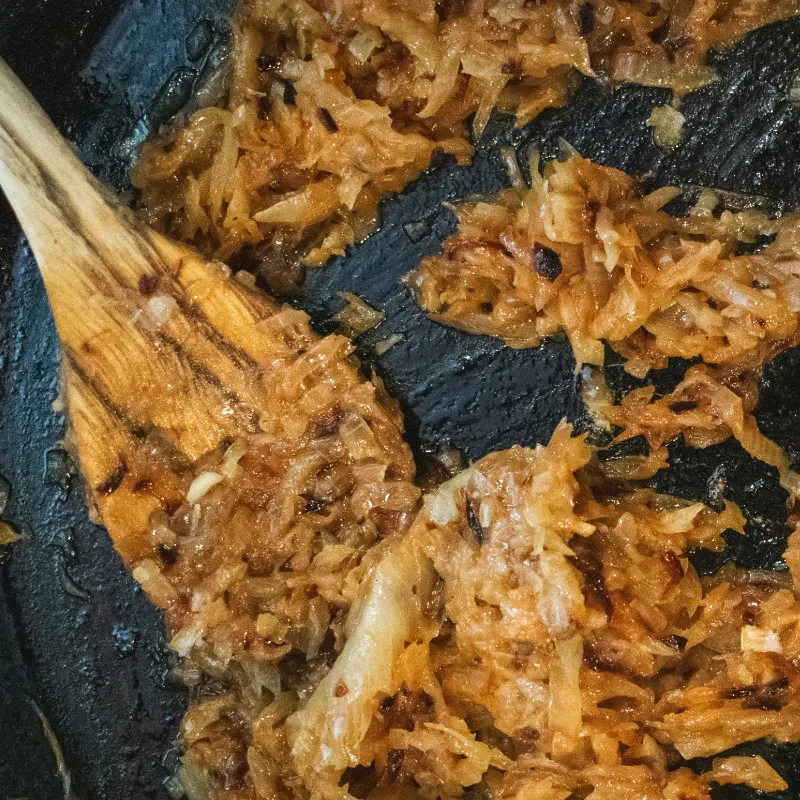20 Game-Changing Tips Every Cook Should Know
That restaurant-quality touch isn't a secret ingredient. It's the collection of small techniques and tips every cook should know.
Whether you're a complete beginner or a seasoned home cook, incorporating these tips and tricks into your routine will make your time in the kitchen more efficient, creative and delicious. Let's dive in with these tips every cook should know!
Part 1: The Prep Work (Mise en Place is Your Best Friend)
"Mise en place" is a French term meaning "everything in its place." It’s the single most important habit for a stress-free cooking experience.
- Read the Recipe. Then Read It Again. Before you touch a single ingredient, read the recipe from start to finish. Twice. This prevents surprises, like realizing you need to marinate something for four hours when you've only got 30 minutes until dinner.
- Do All Your Chopping First. Chop all your vegetables, measure out your spices and have every component ready in small bowls before you even think about turning on the stove. A stir-fry that requires frantic, last-minute chopping is a recipe for burnt garlic.
- A Sharp Knife is a Safe Knife. A dull knife requires more pressure, making it more likely to slip and cause an injury. A sharp knife glides through food with ease. Honing your knife regularly and getting it professionally sharpened once or twice a year is a worthy investment.
You also easily can sharpen your knifes yourself at home using a AccuSharp Knife Sharpener or a Professional Magnetized Honing Steel - Use a "Garbage Bowl." Keep a large bowl on the counter for all your peels, scraps and packaging as you prep. This saves you countless trips to the trash can and keeps your workspace tidy.

Part 2: Building Unforgettable Flavor With The Right Cooking Tips
This is where the magic happens. Great cooking is all about layering and balancing flavors.
- Salt at Every Stage. Don't just salt the final dish. Season each major component as you go. Salting the onions as they sauté, the water for your pasta and the meat before it hits the pan builds a deeper, more integrated flavor than a single sprinkle at the end.
- Don't Fear Acidity. Is your soup or sauce tasting a little flat or one-dimensional? It probably needs a hit of acid. A squeeze of lemon or lime juice or a splash of vinegar can brighten and balance rich, fatty or earthy flavors in an instant.
- "Bloom" Your Spices. To get the most out of your dried spices, "bloom" them. This means toasting them in a dry pan for 30 seconds or frying them in your cooking oil for a minute before adding other ingredients. This process releases their fat-soluble flavor compounds, making them far more aromatic and potent.
- Don't Crowd the Pan. This is a cardinal rule of cooking! When you put too much food in a pan at once, it steams instead of sears. This means no beautiful brown crust and less flavor. Cook in batches if necessary. The delicious result is worth the extra time.
- Save Your Pasta Water. That cloudy, starchy water left over from boiling pasta is liquid gold. The starches help the sauce emulsify and cling to the pasta, creating a silkier, restaurant-quality texture. Add a few splashes to your sauce before tossing in the pasta.
- Fresh Herbs vs. Dried Herbs. They are not always interchangeable. Use hardy, woody herbs like rosemary, thyme and oregano early in the cooking process. Use delicate, leafy herbs like basil, parsley, cilantro and mint at the very end to preserve their fresh, vibrant flavor.
Part 3: Mastering Your Heat & Technique
Cooking is the art of controlling heat. Understanding how it works is key. With the right tips every cook should know.
- Preheat, Preheat, Preheat! Always preheat your pan before adding oil and your oven before adding food. A hot pan prevents sticking and gives you a perfect sear. An oven at the correct temperature ensures even cooking and proper rising for baked goods.
- Let Your Meat Rest. This is non-negotiable for juicy, tender meat. After cooking, let steaks, roasts and even chicken breasts rest on a cutting board for 5-10 minutes before slicing. This allows the juices to redistribute throughout the meat instead of spilling out onto your board.
- Pat Your Proteins Dry. Before searing meat, chicken or fish, pat it thoroughly dry with a paper towel. Moisture is the enemy of a good crust. A dry surface browns beautifully; a wet surface steams.
- Your Burner Has More Than Two Settings. Don't just cook on "high" and "off." Learn to use the full range of your stovetop. A gentle simmer is different from a rolling boil. Adjust the heat throughout the cooking process to get the results you want.
Use a Digital Food Thermometer. Take the guesswork out of cooking meat and chicken. An instant-read digital thermometer is the most reliable way to know if your food is cooked to a safe and delicious temperature.

Part 4: Baking Bonus Cooking Tips
Baking is a science. Precision matters!
- Measure Flour by Weight. A kitchen scale is a baker's best friend. Measuring flour by volume (in cups) can be wildly inaccurate depending on how packed it is. Measuring by weight (in grams) guarantees you're using the exact amount the recipe calls for, leading to consistent results.
- Room Temperature is Key. When a recipe calls for room temperature butter and eggs, listen! Room temperature ingredients emulsify better, creating a smoother batter and a lighter, more tender crumb in cakes and cookies.
- Don't Overmix Your Batter. For tender muffins, quick breads and cakes, mix the wet and dry ingredients only until they are just combined. A few lumps are okay! Overmixing develops gluten, which will make your final product tough and dense.
Part 5: Kitchen Wisdom
A couple of final thoughts to tie it all together.
- Clean As You Go. It sounds like a chore, but washing a few dishes or wiping a counter during a few minutes of downtime (like when onions are sautéing) makes the final cleanup infinitely less daunting.
- Taste, Taste, Taste! Your most important tool in the kitchen is your palate. Taste your food at every step. Does it need more salt? A bit of acid? A touch of sweetness? A recipe is a guide, but your taste buds are the ultimate judge.
Happy cooking!


